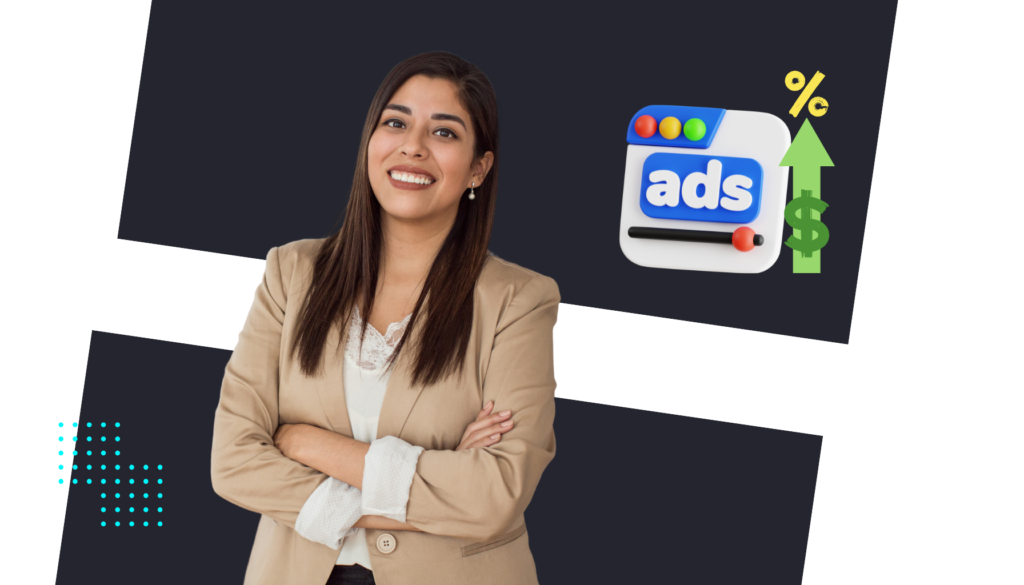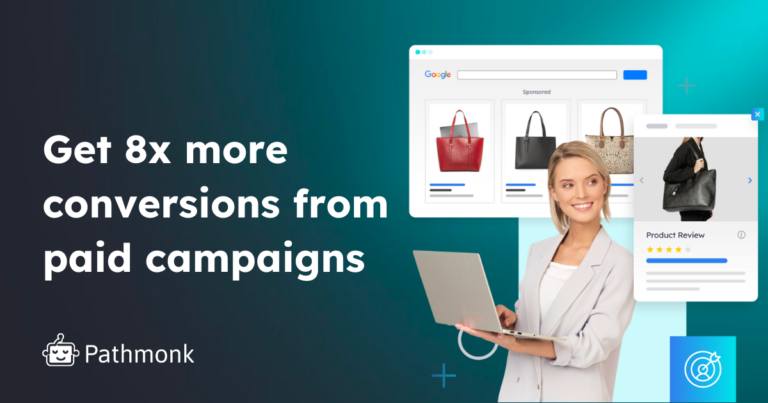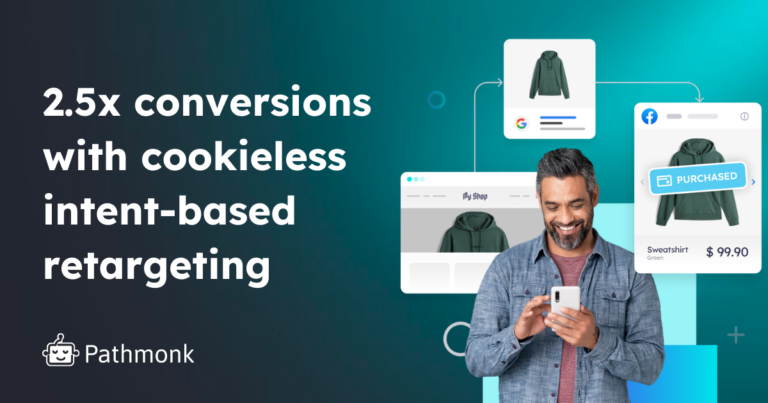
Imagine spending $500 on just ten visitors, only for none of them to convert. This isn’t an exaggeration—this is reality for industries like insurance or business services, where a single click can cost upwards of $50. Google Ads can be a powerful tool, but the costs can quickly spiral out of control, leaving businesses scrambling to make their campaigns profitable.
Most marketers respond by tweaking ads, adjusting bids, or narrowing audiences. But what if the real solution doesn’t lie in the ad account? What if the problem—and the opportunity—lies on your website?
By refining the customer journey and making the path to conversion smoother, it can help reduce the cost associated with each click and acquisition – and optimize your website conversions along the way.
Think of it this way: effective CRO is like fine-tuning the engine of your ad campaigns. You’re not just reaching people—you’re guiding them more effectively toward conversion, making your ad spend work harder for you.
In this guide, we’ll walk you through how CRO strategies can lower your Google Ads CPC and CPA, helping you get more out of every dollar spent.
Table of Contents
What is a High CPC Anyway?
Let’s start there. A “high” CPC or CPA isn’t necessarily a bad thing—it depends on your margins. If you’re spending a lot on clicks but your revenue outweighs those costs, you’re still profitable, and that’s what matters. For instance, if your CPA is $200, but your customer lifetime value (CLTV) is $1,000, there’s no need to panic.
The real issue starts when the numbers don’t add up. A high CPC becomes a problem when your costs outweigh the revenue, or when you’re unable to scale because every additional click eats into your budget with little return. That’s when it’s time to rethink your approach—and no, the answer isn’t always adjusting bids or targeting. Sometimes, the problem lies in what happens after someone clicks.
Why Do You Have a High CPC and CPA in Google Ads?
To reduce your Google Ads CPC and CPA, it’s essential to identify the factors that drive up these costs. High costs often stem from specific issues affecting ad relevance, user experience, and overall campaign performance. Here’s a breakdown of the primary causes:
- High competition and bid inflation: In competitive industries, advertisers are often forced to bid higher to outpace competitors. When targeting high-demand keywords, CPC naturally rises.
- Ineffective targeting strategy: Broad targeting—through loose match types or poorly refined audience segments—can lead to irrelevant clicks that don’t convert, raising CPC and CPA.
- Inconsistent or generic ad copy: Generic ad copy that doesn’t align with user intent can lower CTR and miss conversion opportunities. Audiences expect ads tailored to their search queries and needs.
- Irrelevant or underperforming keywords: Broad or unrelated keywords can quickly raise CPC without driving relevant traffic. Paying for clicks on irrelevant keywords inflates ad costs without ROI.
- Inefficient bidding strategy: Poorly aligned bidding strategies can escalate ad spend without boosting conversions. Automated bidding without insights may miss your objectives.
- Poorly optimized landing pages: If users don’t engage or quickly leave the landing page, CPA will rise. A landing page that doesn’t fulfill the promise of the ad, loads slowly, or lacks engaging content can drive up costs by lowering conversions.
How CRO Directly Impacts Google Ads CPC and CPA
CRO is a critical, often overlooked factor when it comes to managing the costs of Google Ads. While many advertisers focus on keywords, bidding, and targeting to lower their CPC and CPA, these tactics only address one part of the puzzle.
What happens after a user clicks on an ad is just as important, if not more so, in determining the final cost of each conversion. When you improve the likelihood of a visitor taking action on your website, you’re ultimately helping your ad spend work harder.
A well-executed CRO strategy enhances the entire user journey, starting from the moment a visitor lands on your page. High bounce rates or low engagement often signal to Google that users are not finding what they’re looking for, which can negatively impact your ad Quality Score.
This score is a crucial factor in determining CPC because Google rewards ads that deliver relevant, engaging experiences. In essence, when CRO improves your site’s engagement and relevance, it leads to a lower CPC by enhancing the Quality Score.
Moreover, a smooth, intuitive path to conversion doesn’t just reduce bounce rates—it directly lowers your Cost Per Acquisition (CPA) by increasing the percentage of visitors who become customers.
CRO works to maximize the value of each click, meaning fewer clicks are required to generate the same number of conversions. This makes CRO an essential tool for optimizing ad budgets, as it turns every visit into a higher-value opportunity and keeps your CPA in check.
Top CRO Techniques to Lower CPC and CPA
Here are six essential CRO techniques to help lower your CPC and CPA:
- Optimize for mobile:
With a significant portion of traffic coming from mobile, it’s crucial to ensure your website is fully optimized for mobile devices. Mobile-friendly pages load quickly and are easy to navigate, reducing bounce rates and improving ad relevance.
- Improve landing page load speed:
Page load speed is a core component of user experience and Quality Score. Google favors pages that load quickly, so slow-loading sites often result in higher CPC. Use tools like Google PageSpeed Insights to assess and improve load times.
- Leverage testing for continuous improvement:
Test different elements on your landing pages, such as headlines, CTAs, and form layouts, to see what resonates most with your audience. By consistently running A/B tests, you can refine the user experience and identify elements that contribute to higher conversion rates, improving Quality Score and lowering CPC.
- Implement social proof elements:
Incorporate testimonials, reviews, and case studies on your landing pages to build trust and credibility. Social proof helps users feel more confident about taking action, reducing bounce rates and increasing conversions, which positively impacts your ad costs.
- Use dynamic content:
Dynamic content allows you to tailor the text and visuals on your landing page to match the visitor’s intent or the specific ad they clicked. This technique enhances ad relevance, improves Quality Score, and lowers CPC by creating a more personalized user experience.
- Minimize friction:
By reducing the number of form fields or the number of steps to make a purchase, for example, you create a smoother experience, leading to higher conversion rates and helping lower your CPA and CPC.
Do I Need a CRO Solution to Lower Google Ads CPC and CPA?
You may already be optimizing your Google Ads campaigns with carefully selected keywords and strategic bidding, but if CPC and CPA are still higher than you’d like, it might be time to consider a specialized CRO solution. Here’s how to determine if you need CRO to drive down those costs:
- You’re consistently seeing high CPCs despite refined keyword and bidding strategies: If your ad spend keeps rising without improved results, a CRO solution can address post-click engagement, boosting Quality Score and reducing CPC by improving user experience.
- Your conversion rates are low, even though ad click-through rates (CTR) are strong: If users are clicking but not converting, it’s likely a sign that your landing page or site experience isn’t delivering. A CRO solution can align the post-click experience with user intent, ensuring more clicks turn into conversions.
- Your CPA is climbing, making it hard to meet ROI goals: High CPA can drain budgets quickly, especially if visitors aren’t converting. A CRO solution optimizes the journey from landing to conversion, reducing CPA by enhancing every interaction on your site.
- You’re struggling with high bounce rates or low engagement metrics: Poor engagement signals like high bounce rates indicate that visitors aren’t finding what they need on your site. CRO solutions can make visitors feel more connected to your content, lowering bounce rates and improving ad performance.
If any of these scenarios sound familiar, implementing a CRO solution can transform your Google Ads performance. By optimizing the post-click experience, you’re not just getting more conversions—you’re also making every click more cost-effective.
Lower Google CPC and CPA with Pathmonk
Pathmonk goes beyond traditional ad strategies by refining the post-click experience with intelligent solutions that address the specific needs of each visitor, enhancing both user engagement and conversion rates. By aligning Pathmonk’s tools with your ad efforts, you’re able to maximize every click, making each dollar of ad spend work harder for you.
- Personalized experiences that drive conversions
Pathmonk dynamically customizes the website experience based on the ad that brought the visitor to your page. This means each visitor is met with content that aligns perfectly with their intent, creating a seamless and relevant experience.
When visitors find exactly what they’re looking for, they’re more likely to stay, engage, and convert—reducing drop-offs and increasing the quality of conversions.
- Higher quality scores for lower CPC
Google rewards ads that lead to engaging, relevant user experiences, which can lower your CPC. With Pathmonk, visitors see landing pages that resonate with the ad they clicked, improving engagement metrics that signal to Google that your ads are valuable. This enhanced Quality Score not only boosts ad visibility but also brings down your costs per click.
[Include quote from customer]
- Automated optimization of conversion paths
Pathmonk automatically enhances the journey each visitor takes through your site. With tools that adapt to each user’s behavior, Pathmonk keeps visitors engaged, creating an intuitive path toward conversion. For marketers, this translates to improved CPA, as each conversion comes at a lower cost without requiring manual adjustments to the website or ad copy.
- Cookieless retargeting for maximum relevance
With privacy concerns and cookie restrictions on the rise, Pathmonk provides an innovative solution with intent-focused retargeting that doesn’t rely on cookies. Pathmonk captures each visitor’s intent and behavior to deliver personalized follow-up experiences, ensuring retargeting campaigns remain relevant without the need for third-party cookies.
- Streamlined mobile and desktop experiences
Pathmonk ensures a seamless experience across devices, so visitors from mobile or desktop find a site that’s fast, intuitive, and tailored to them. This focus on mobile and desktop optimization improves user experience, helping reduce bounce rates and increase conversions.
Pathmonk brings these elements together to create a CRO solution that guarantees at least a 20% growth on conversion rate- or your money back! But from our experience, you can expect a 50% growth on average. Test this personalized demo today and see it for yourself.
Increase +180%
leads
demos
sales
bookings
from your website with AI
Get more conversions from your existing website traffic delivering personalized experiences.








